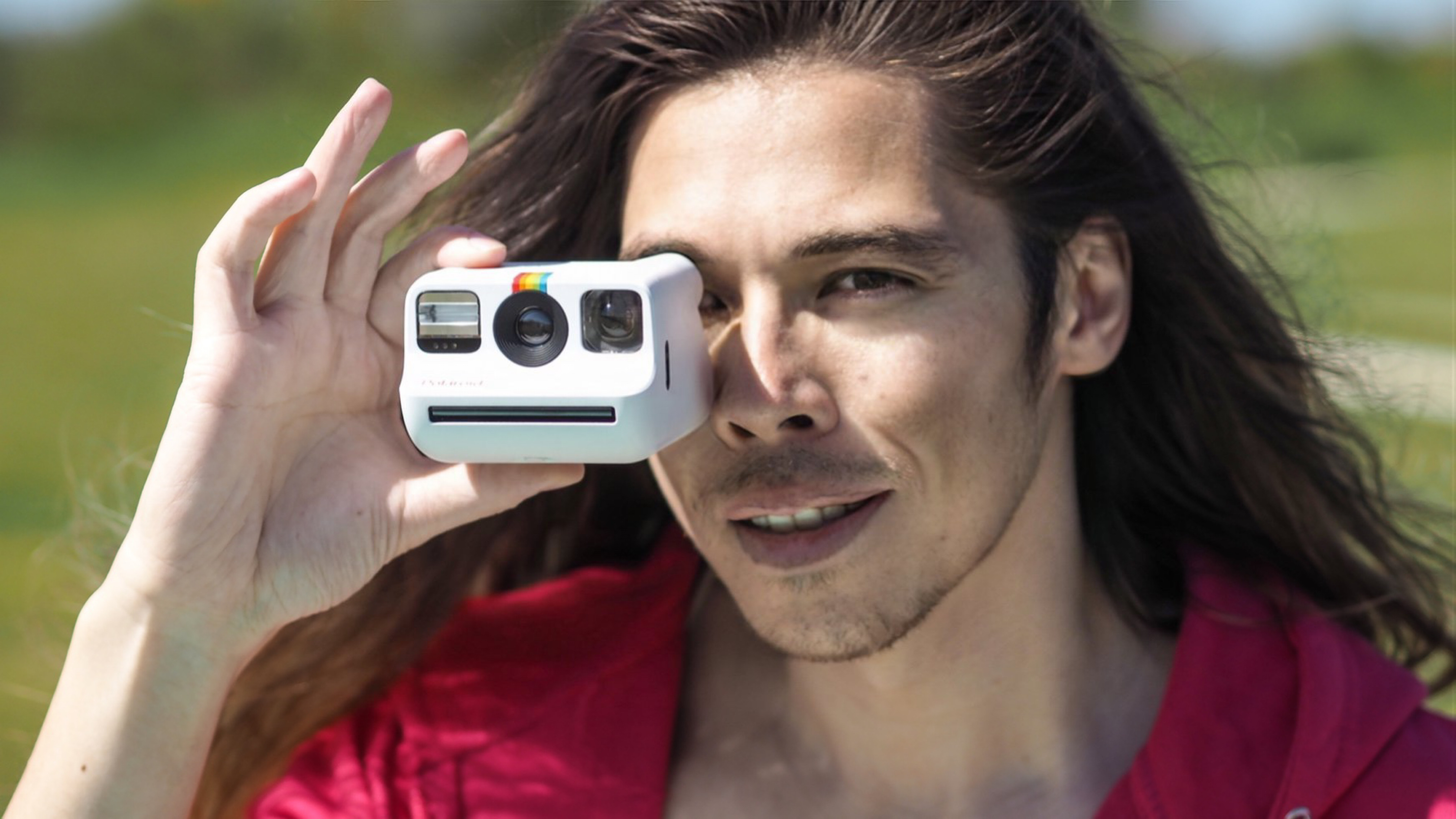
The Polaroid Go is one of those cameras that everybody just wants as soon as they see it. It's so tiny that you could put it in a small Tupperware container, and is officially the smallest analog instant camera in the world – and, for my money (literally, since I've bought one), one of the best instant cameras on the market.
There are smaller digital instant cameras (and smaller cameras, period), but the tiny form factor only increases the desirability of Polaroid cameras – giving the Polaroid Go the same geek chic appeal as retro gadgets like the Nintendo SNES Classic Edition and Sega Genesis Mini.
Basically it looks like a Polaroid Now got shrunk in the wash, but it's not just the camera; Polaroid has designed a whole new line of miniature instant film, too. (And unlike Instax Mini film, Polaroid Go film retains the same square proportions rather than the credit card-shaped prints.)
Since I wrote this review, Polaroid Go Generation 2 has been released with a few key differences. Some batches of the original Go had severe underexposure issues, rendering even bright daylight scenes in murky shadow. The Gen 2 model addresses the problem with an improved light meter and aperture range – along with the addition of a USB-C port, to replace the older micro USB.
I should point out that I've used a number of OG Polaroid Go cameras and never experienced this problem (though it's certainly prone to overexposing images). Nonetheless, if you want to play it safe, I'd suggest opting for the newer model – you can read my Polaroid Go Generation 2 review for more info.
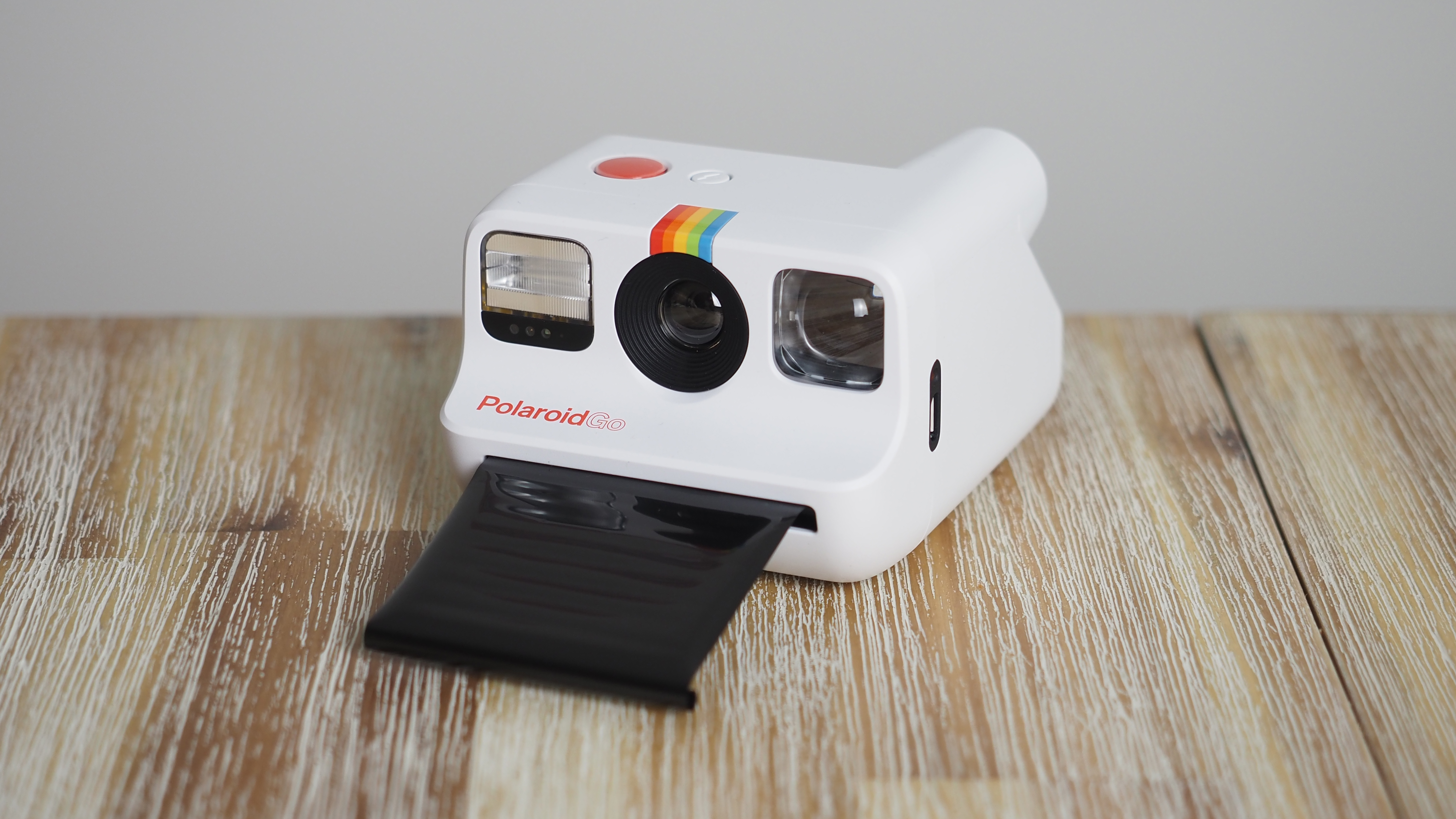


Polaroid Go specifications
Film type: Polaroid Go (ASA 640, 66.6 x 53.9 mm (image area 47 x 46 mm))
Lens: 34mm (full-frame equivalent)
Shutter speed: 1/125-30sec
Aperture: f/12 and f/52
Flash: Automatic (with override)
Power: USB-rechargeable lithium-ion 750mAh battery, 120 exposures
Dimensions: 105 x 83.9 x 61.5 mm
Weight: 242 grams (without film pack)
Polaroid Go video review
Polaroid Go key features
Obviously the headline feature is the camera's ridiculous pocketability. Indeed, it's so small that Polaroid even envisions you wearing it around your neck, as a Flava Flav-inspired fashion statement. Point being, it's so portable that you can take it and use it anywhere – something that can't really be said of its bulky big brothers like the Polaroid OneStep.
The Polaroid Go has plenty more party tricks up its sleeve, though. It offers double exposures – something that its key rival, the Instax Mini 11, doesn't do – along with a self-timer for group shots, and a tiny selfie mirror for those vanity shots.
The USB-rechargeable lithium-ion battery also helps reduce bulk, as well as running costs – something that people don't often think about when it comes to the Mini cameras, which gobble up AA batteries.

Polaroid Go build and handling
It's an overused phrase, but it's the appropriate one: the Polaroid Go is small but perfectly formed at just 105mm long, 84mm wide and 61mm tall (which is positively tiny, next to the 107.6 x 121.2 x 67.3mm dimensions of the Instax Mini 11).
Despite the toy-like size, it's perfectly easy to hold. It's so tiny that you can easily operate it by pinching it between your thumb and forefinger, which combined with the simple controls makes it one of the best cameras for kids. You can see how small the Go is, compared to other instant cameras, in the images below.
Like all analog instant cameras, the offset viewfinder requires a little practice and marksmanship to frame your shots correctly, but it's bright and clear and a overall pleasure to use.
While the build quality of the camera itself is hard to fault, we have to point out that the very first film pack we loaded jammed on us; the dark slide failed to eject, misaligning the subsequent frames, three of which failed to eject. Anecdotally, we've only ever had one pack of Instax film jam on us, but three packs of (modern) film have jammed in various (modern) Polaroid cameras.
Speaking of film, we prefer the square-format of the new Polaroid Go film. Measuring 67 x 54mm, with the picture area being 47 x 46mm, it's a more comfortable aspect ratio within which to film your shots, especially at this small size. By contrast, Instax Mini film (measuring 85 x 54mm, with a 62 x 46mm picture area) can feel awkward to frame given its rectangular ratio.

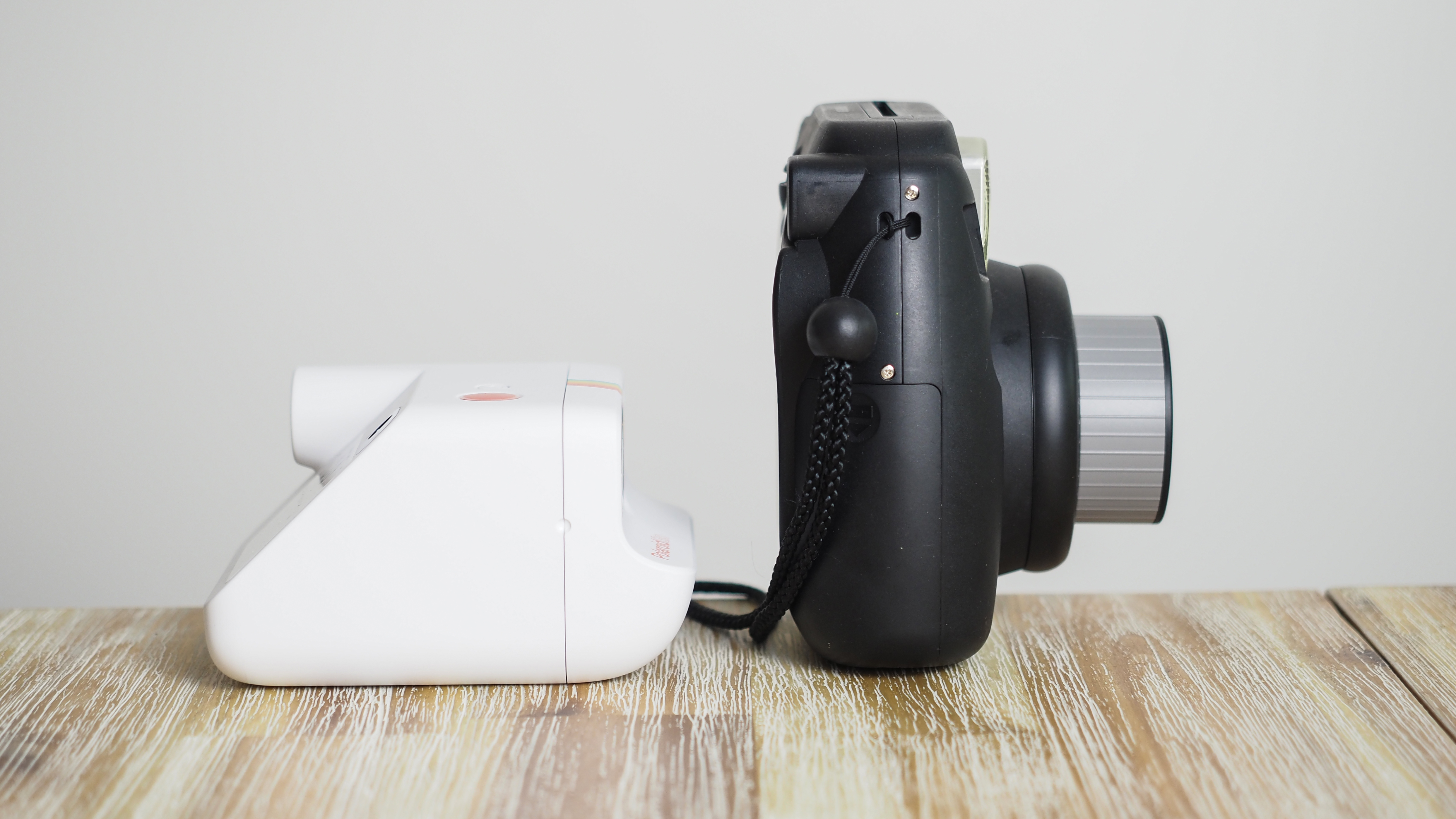
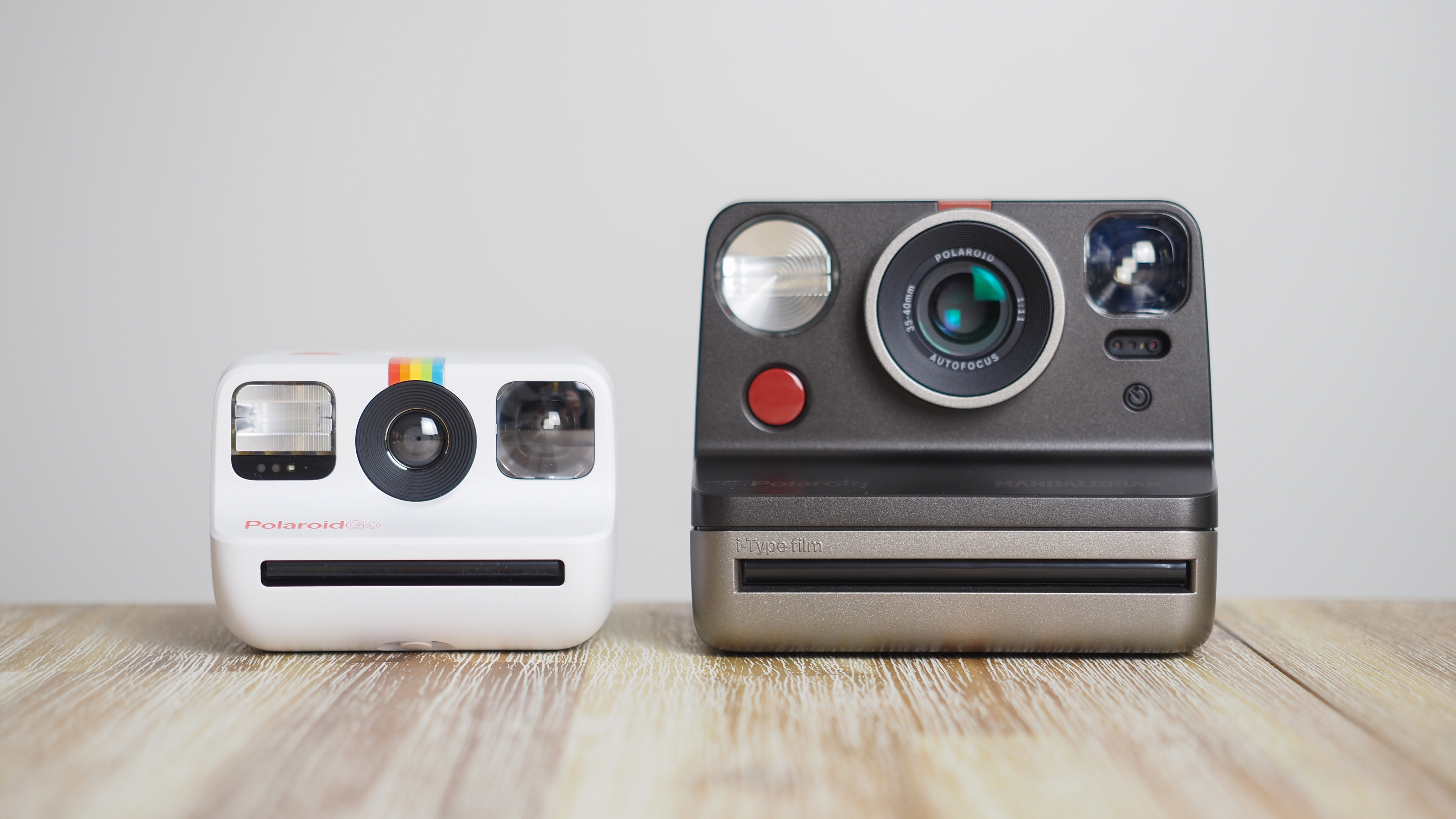
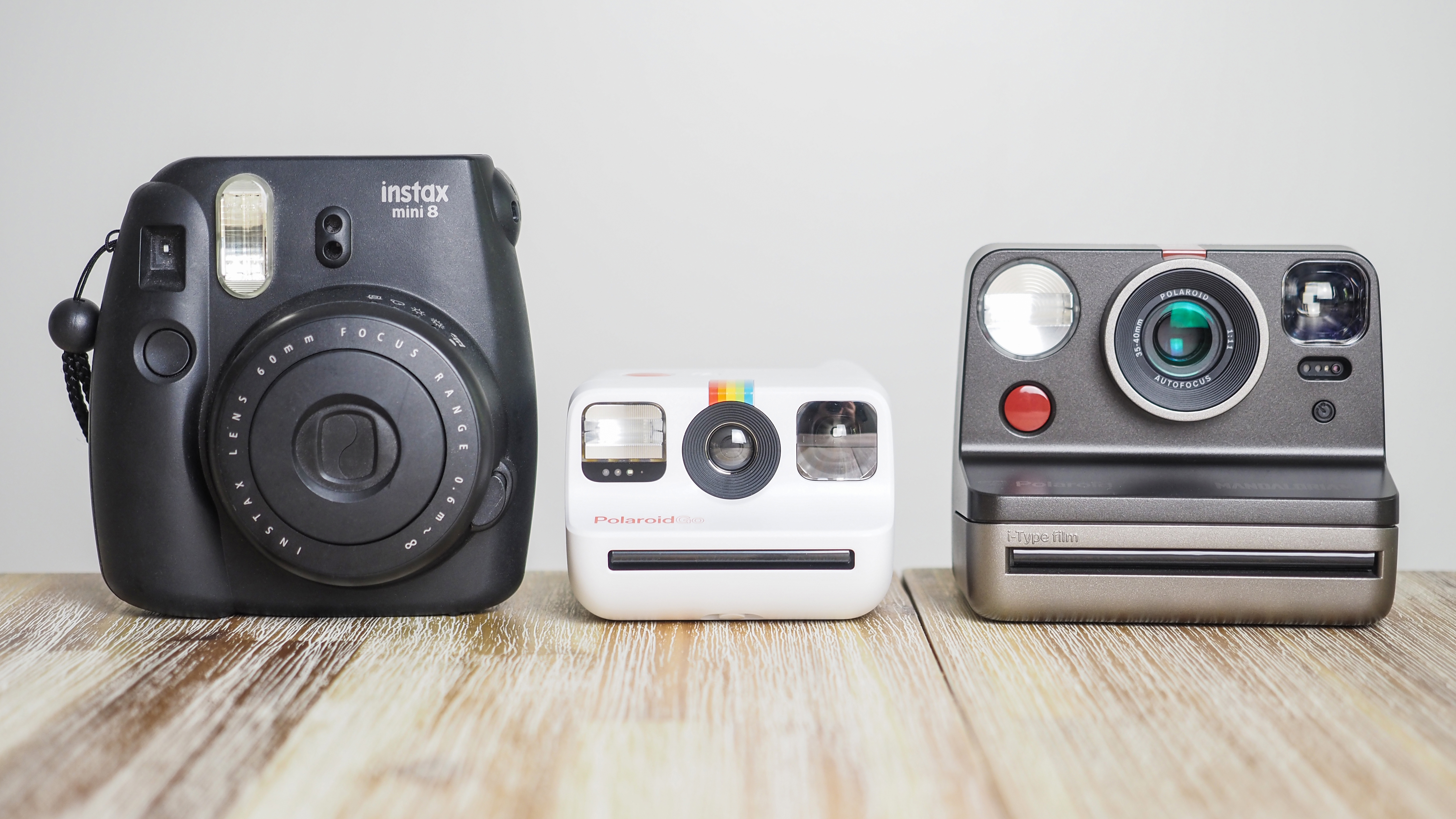
Polaroid Go performance
The big question is, does the reduction in size come with a reduction in quality? Well, the big (well, small) answer is yes.
Even the best instant cameras struggle with overexposure in bright sunlight, or even just regular daylight. However, bigger bodies like the Polaroid Now handle bright conditions much better than the Go does – though it's worth noting that the Instax Mini cameras also struggle with sunlight.
The net result is the Go doesn't always play nice with bright weather – a shame, since it's otherwise tailor-made for fun summer snaps. If you're going to take photos on a sunny day, expect a lot of overexposed images – always make sure you don't shoot towards the sun if you don't want blown-out shots.
When it comes to everyday images, taken indoors or in more balanced lighting conditions, the Polaroid Go produces good results – though it has to be said that Instax Mini cameras tend to deliver more contrast, and better bite in the details.
At the same time, the Go's images are definitely more characterful; if you love the light leaky, sunfaded 'Holga look' then you're going to get the more authentic instant film experience with the Polaroid.

Polaroid Go verdict
The Polaroid Go is a camera that everyone will fall in love with faster than it takes a photo to develop. Bigger instant cameras balance exposures better, and rival Instax Mini cameras deliver better image quality – but neither are as fun to use, or will make you as many friends, as the Go… which still produces pleasing pics, though overexposure is an issue.
A consideration is that Instax Mini film works out cheaper than Polaroid Go film, but then you'll also need to replace those AA batteries on the Mini whereas the Go just needs USB to top up the power. And the Go boasts double exposures, which you won't get unless you opt for pricier options like the Instax Mini 90.
A fun and funky little camera, the Polaroid Go will be the star of your next party and will deposit an endless amount of memories in your pocket or wallet. And if you've got kids, this could be the ideal camera for little hands to get started with.
Again, be aware that some users experienced major underexposure issues with the original Go. However, I've used three different cameras and didn't experience this problem. Still, unless you're able to test the camera you're buying, I would advise buying the newer Polaroid Go Gen 2 to be on the safe side.








